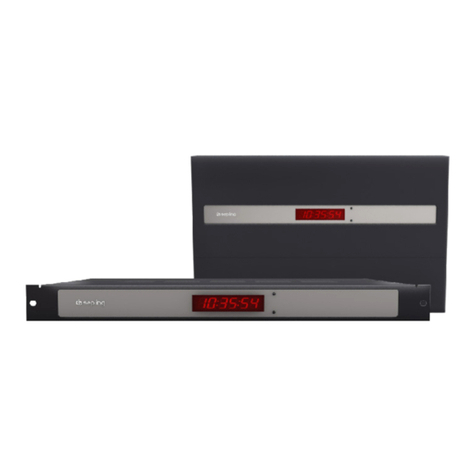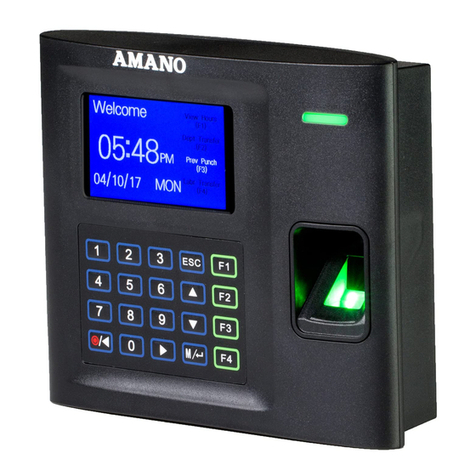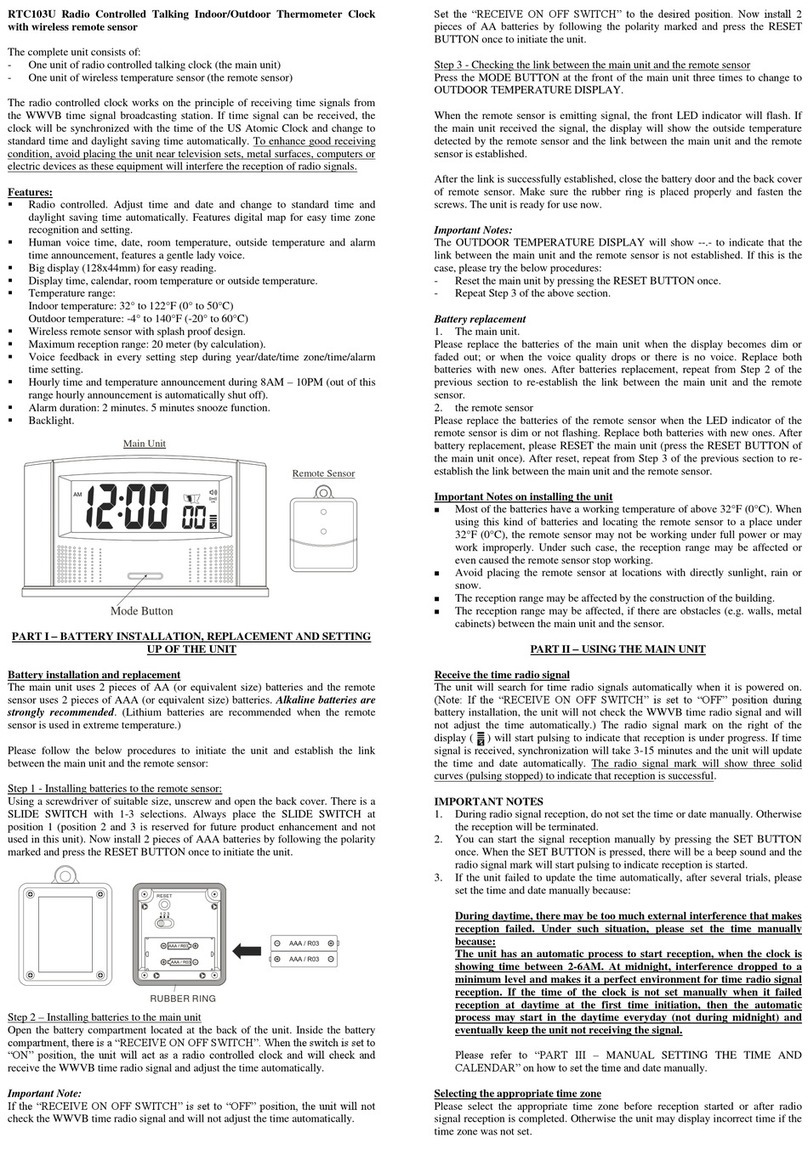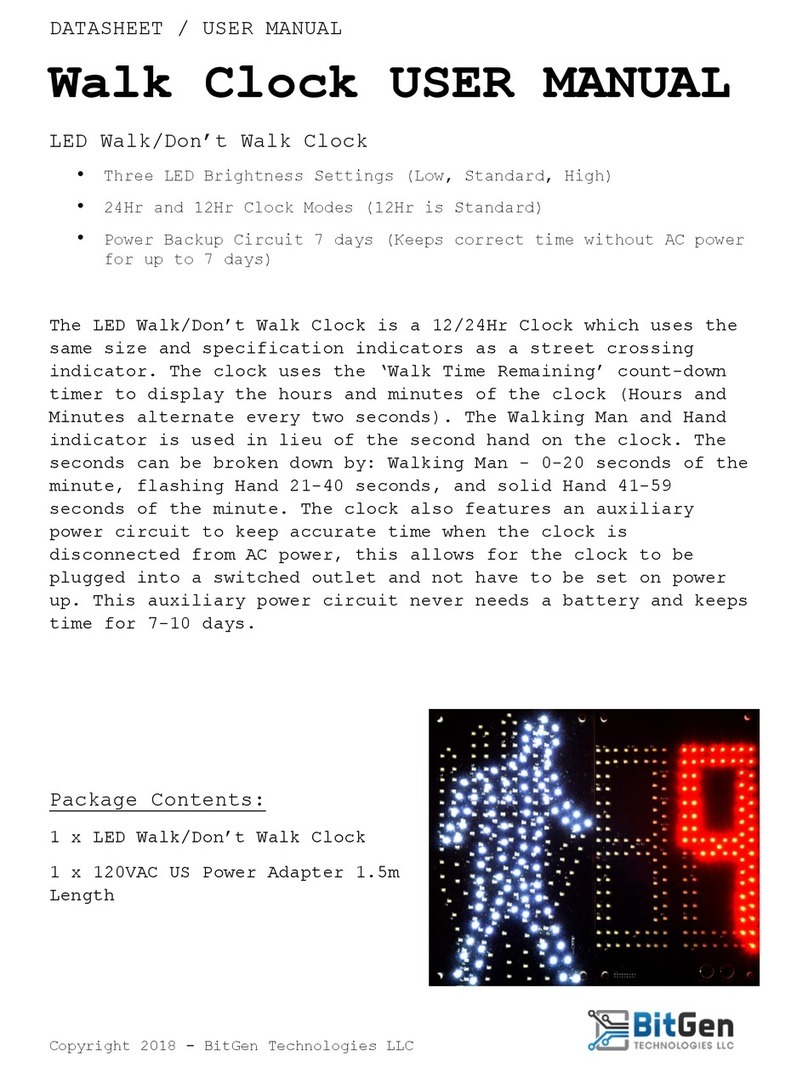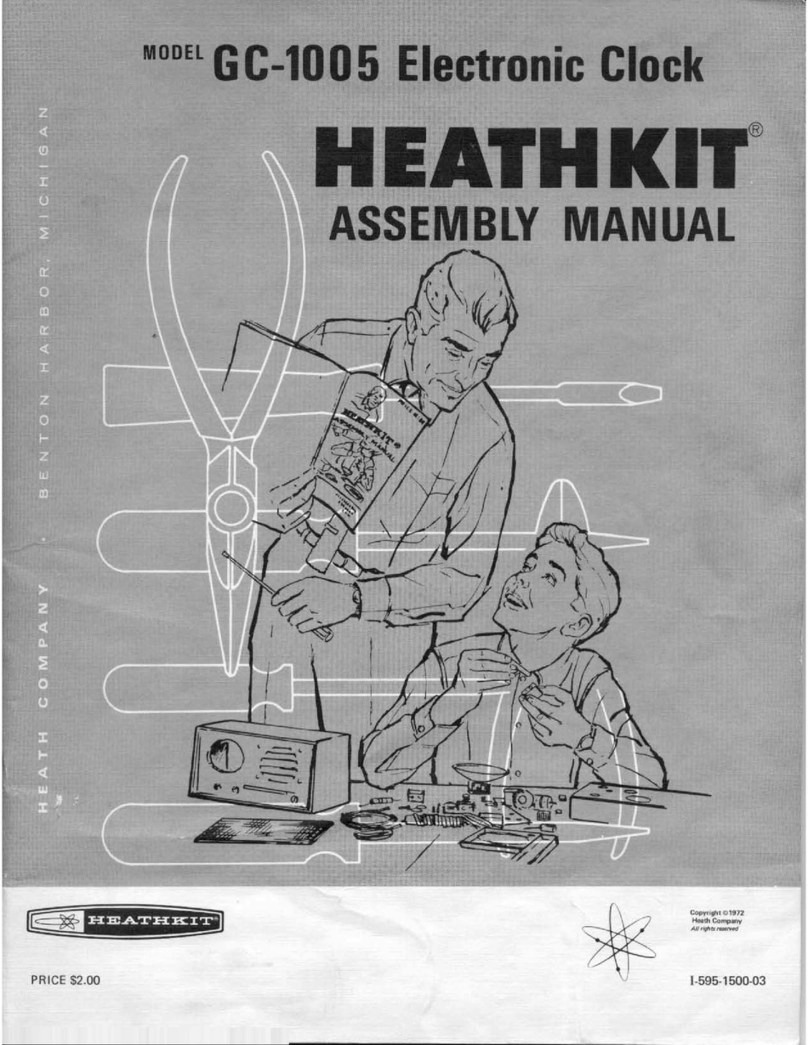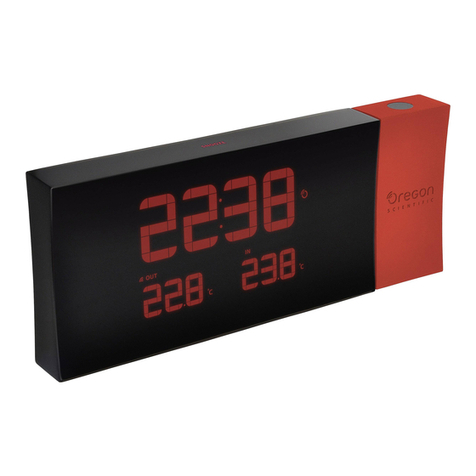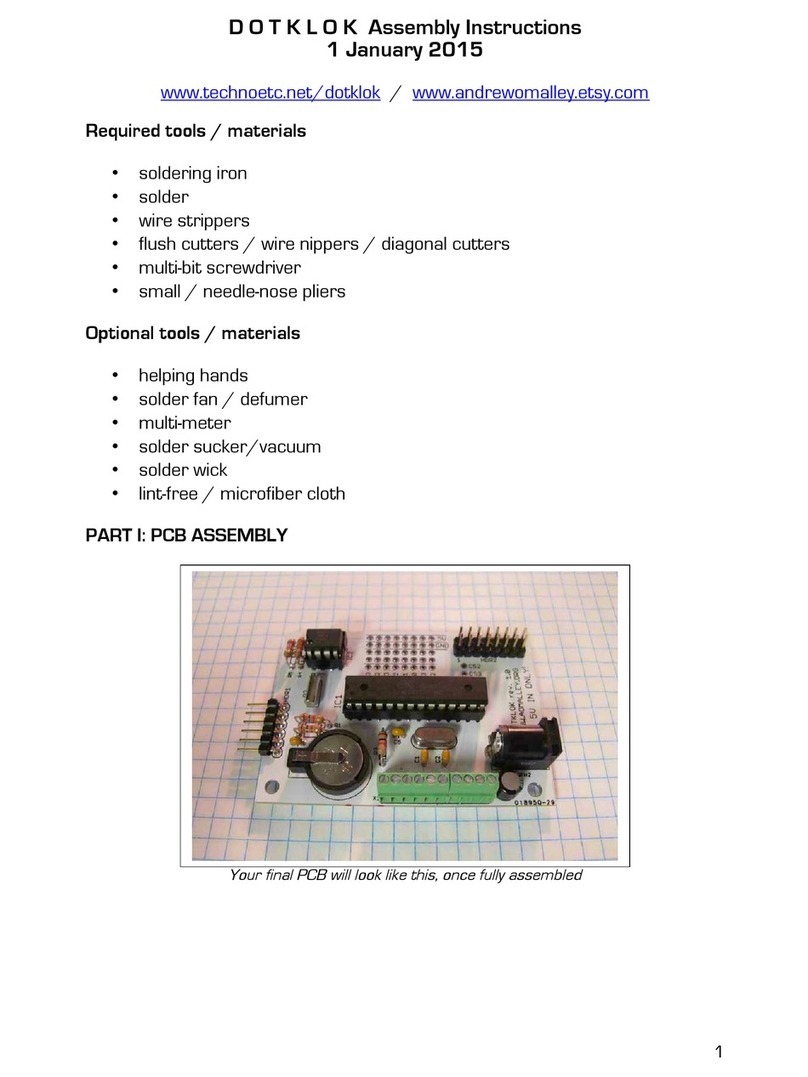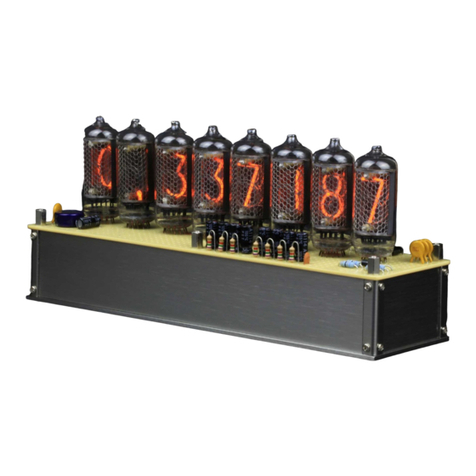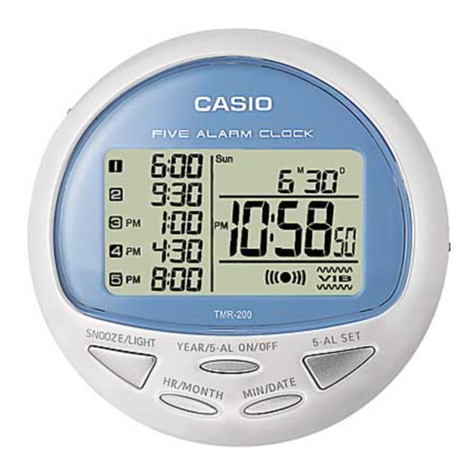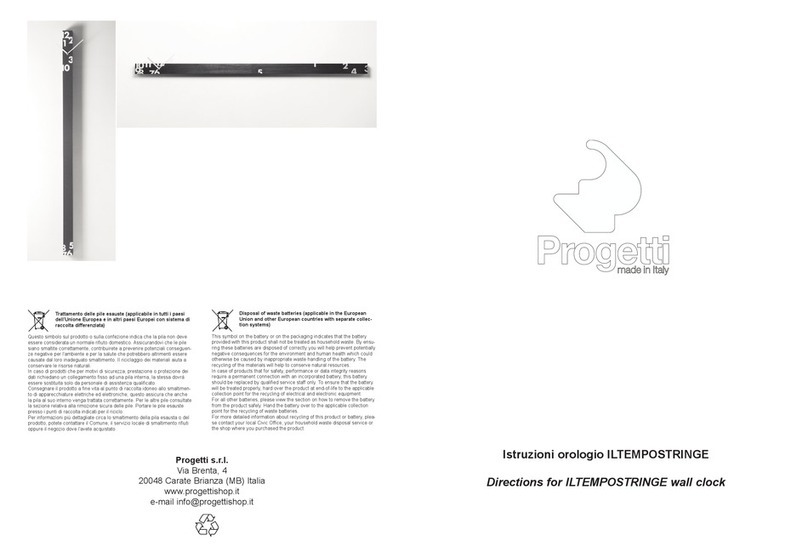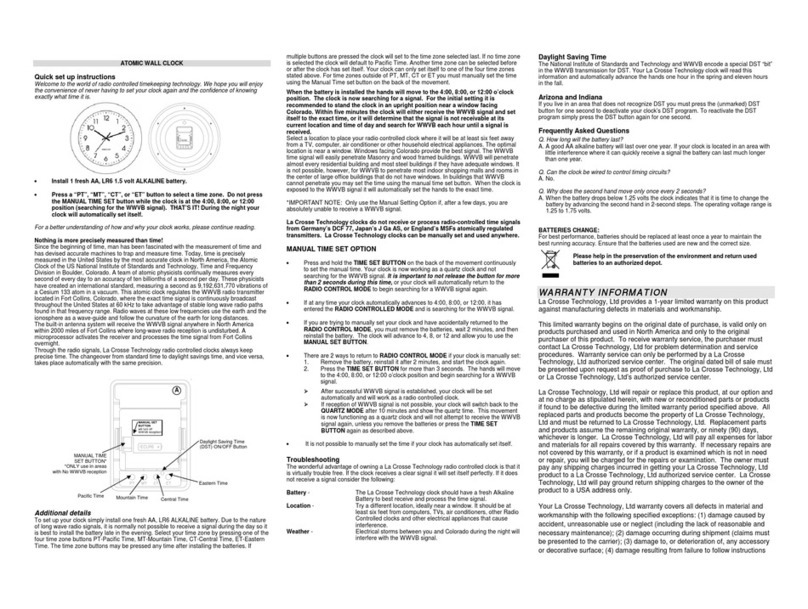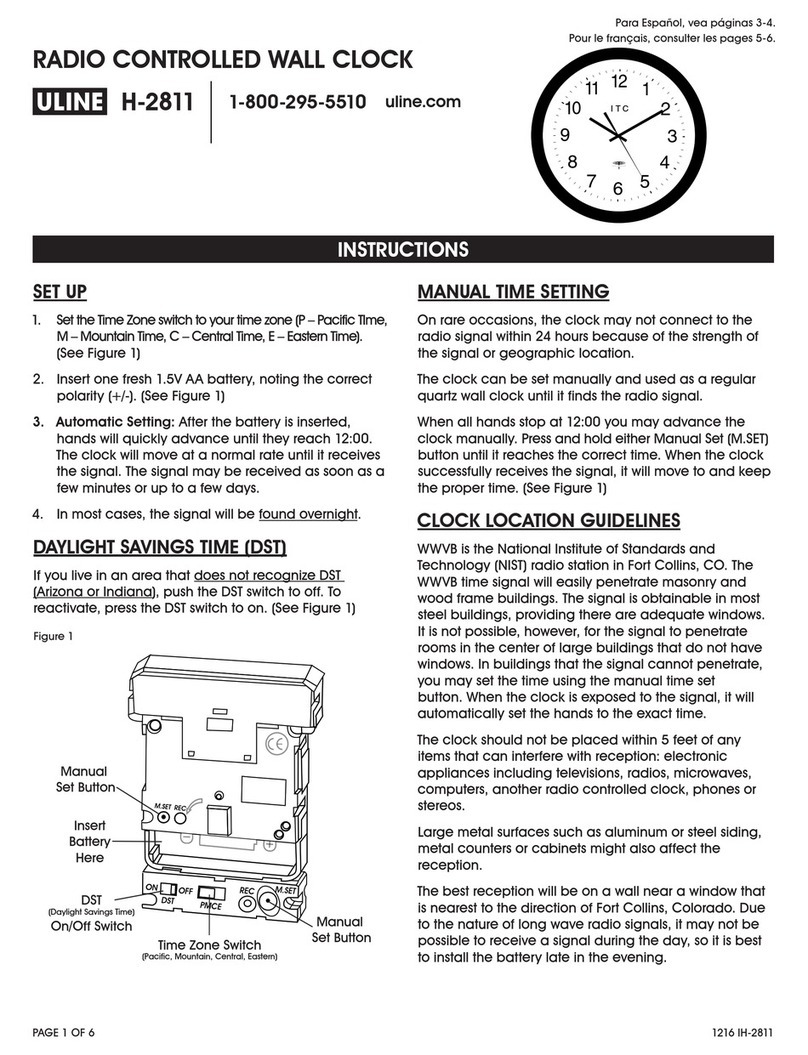
Page 3
Table of Content
Table of Content......................................................................................................... 3
1 Installation and assembling................................................................................. 4
1.1 General Information...................................................................................... 4
1.2 Installation.................................................................................................... 5
1.3 Connections................................................................................................. 6
1.4 Connection of power supply (230VAC) ........................................................ 7
1.5 Connection of slave clocks........................................................................... 8
1.6 Connection of DCF receiver......................................................................... 9
2 Operation........................................................................................................... 10
2.1 Description of the display........................................................................... 10
2.2 First steps................................................................................................... 10
3 Menu ................................................................................................................. 11
3.1 Masterclock................................................................................................ 12
3.2 Slave Clock Line Settings........................................................................... 16
3.3 Relays........................................................................................................ 20
3.4 Programming of the relay switching programs........................................... 23
3.5 Settings...................................................................................................... 29
3.6 Service....................................................................................................... 32
4 Supplement....................................................................................................... 35
4.1 Time Zones................................................................................................ 35
4.2 Keyboard Layout for Dayplan Names......................................................... 36
